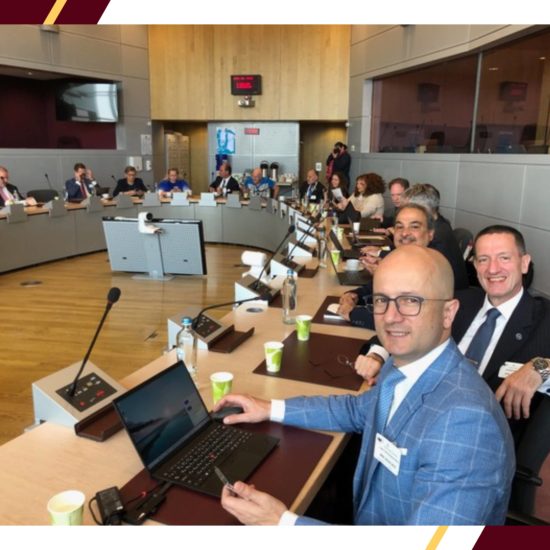2023 ESG Finance Leaders Roundtable Forum

The ECCT's Low Carbon Initiative (LCI) was a co-organiser of the "2023 Green Finance Leadership Roundtable Forum" (綠色金融領袖圓桌論壇) together with the Bankers Association of the Republic of China (BAROC 台灣銀行公會), the Taiwan Academy of Banking and Financing (TABF, 金融研訓院) and the Financial Supervisory Commission (FSC, 金管會). The forum brought together 125 senior executives of financial institutions and managers in ESG-related business to discuss Taiwan's financial institutions’ net zero transformation corresponding to the FSC's "Green Finance Action Plan 3.0". At the forum, opening remarks were made by the ECCT LCI Chair H Henry Chang (歐洲商會-低碳倡議行動主席 張瀚書), Hsiao Tsuey-ling (金融監督管理委員會副主委 蕭翠玲), BAROC Chairman Paul CD Lei (中華民國銀行公會理事長 雷仲達) and TABF Chairman Su Jain-rong (台灣金融研訓院董事長 蘇建榮).
Following opening remarks, presentations were made by six banking executives, including Karen Tsang, Head of Sustainable Investment Greater China for Crédit Agricole CIB (CACIB, 曾嘉汶 可持續投資銀行 大中華區主管), along with executives from five Taiwanese banks. Presentations focused on the various banks’ ESG strategies designed to bolster resilience and make meaningful contributions to Taiwan's sustainable development.
In her presentation, Karen Tsang spoke about how the trillion-dollar green financial market is facilitating new momentum towards net zero. The past few years have seen a huge increase in green financing. In 2021 and 2022 the market for sustainable development finance rose to €1.425 trillion and €1.426 trillion, respectively. Of this, sustainability linked loans accounted for more than €500 billion each year while green bonds accounted for the next highest proportion at around €450 billion each year, followed by social responsibility/sustainability bonds.
In the Asia Pacific region, the issuance of sustainable development bonds in 2022 increased by 11% year-on-year despite continued market volatility and heightened geopolitical risks. This was on top of growth of 134% in 2021 and growth of 44% in 2020. Meanwhile the volume of sustainable development loans increased by 291% year-on-year in 2021, and 80% year-on-year in 2022, indicating a continuing strong growth trend.
Another trend is an increase in demand by investors for ESG and stricter standards. The imbalance between supply and demand is expected to continue and will encourage execution momentum among lenders and investors towards sustainable assets, especially green bonds. In addition, the ESG structure and labelling is becoming more diversified and regulators and investors are paying more attention to the issue of greenwashing. The speaker concluded by outlining some recent prominent examples of green financing.

